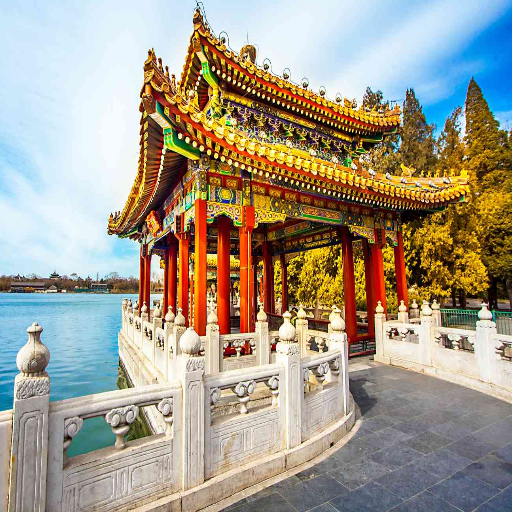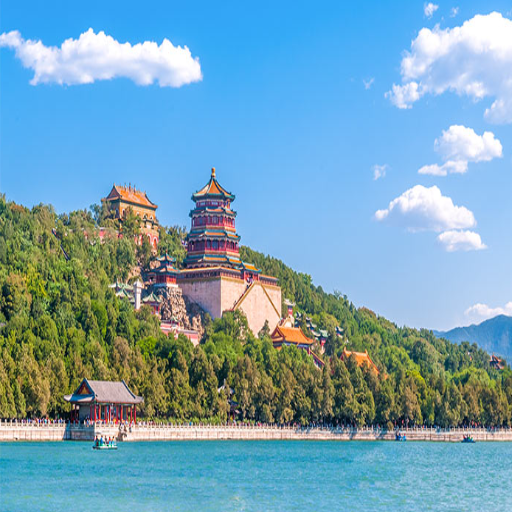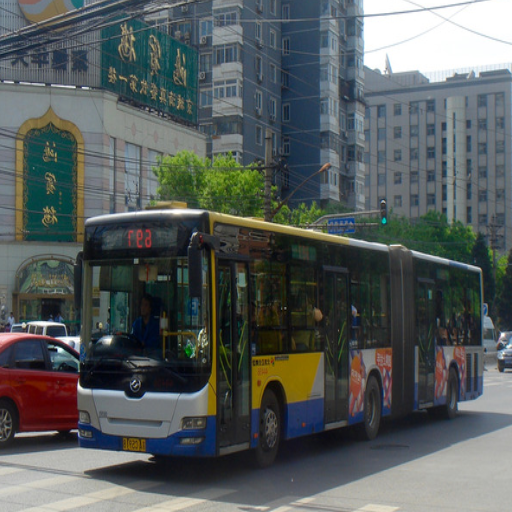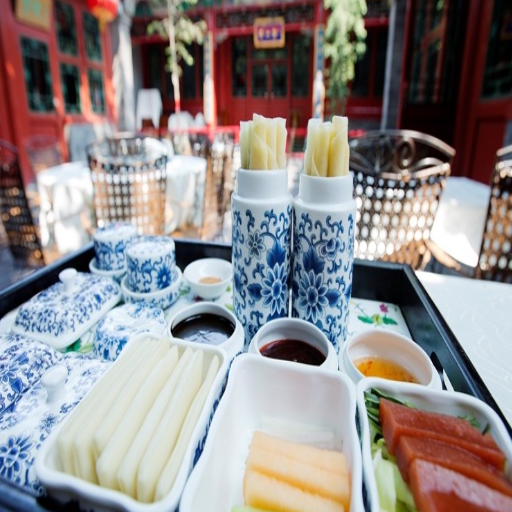The colorful capital of China, Washington’s counterpart, Beijing, is a city that blends ancient cultural practices with modern engineering marvels. It has distinctly marked periods of significant civilization changes, giving it rich historical and cultural prominence. It is slowly becoming an established tourist hotspot, so grabbing the chance to travel to it will save you endless wait time before your tour. There is so much to see, including stunning imperial architectural structures, ancient temples, and city monuments encompassing several UNESCO World Heritage Sites. This article will delve deeper into some of Beijing’s most visited historic attractions and their cultural significance, along with them to help you plan your travel better. The splendid historical marvels of Beijing will bring new experiences to light, whether you are a seasoned traveler or an amateur.
What are the top attractions in Beijing?

Must-See Sites: Forbidden City and Tiananmen Square
In the center of Beijing is The Forbidden City, an immense complex of imperial palaces that housed Chinese emperors for five centuries during the Ming and Qing Dynasties. It spans 180 acres, has 900 structures, and boasts the world’s best-preserved traditional Chinese buildings, where visitors can appreciate the artistry and architectural detail. The Palace of Tranquil Longevity and the emperor’s throne room, the Hall of Supreme Harmony, are just a few beautiful places for guests. World-famous Chinese architecture is on display for the public with its symmetrical layout, extensive use of wood, attractive feng shui characteristics, and golden roof tiles that signify imperial power.
Next to the Forbidden City lies Tiananmen Square, one of the world’s largest public squares, measuring 109 acres. It is culturally and politically significant as it contains Important places in Chinese history. Essential structures in the square include the Monument to the People’s Heroes, the Great Hall of the People, and the Mausoleum of Mao Zedong. Visitors are provided with insight into modern Chinese history, and it is a center for national festivities. To maximize your experience, try arriving early to both places to save on time spent in traffic and explore all areas in detail.
Exploring the Great Wall of China: Which Section to Choose?
The following steps of the Great Wall of China may differ depending on your fitness level and the kind of experience you would like. Here are a couple of the more well-known steps:
Badaling
Best for: People visiting for the first time or with mobility issues.
Details: This section is the most visited and easiest to access. The pathways have been restored, and handrails have been placed, making the area accessible to the elderly and families with young children. Expect high foot traffic during peak times of the season.
Mutianyu
Best for: Those interested in fewer crowds and spectacular views.
Details: This area offers stunning views of nature and is less commercialized than Badaling. It includes a cable car and a unique toboggan ride down.
Jiankou
Best for: Hikers in search of a challenge.
Details: Ideal for seasoned hikers, this area is characterized by steep and sharp climbs and harsh ruinous structures, which are instilled in highly rugged terrain. This means that novice hikers and children will find this section severe and hard to navigate.
Simatai
Best for: Culture and history enthusiasts.
Details: Less traveled compared to other wall sections, Simatai has retained its original structures, making it a great area to experience Chinese history. Although parts of this region are more complex, th
Jinshanling
Ideal for: Taking Pictures and Long Hikes.
Descriptions: This section has magnificent photography scenes because of its combination of well-preserved and beaten paths, which trekkers and photographers crave.
Considering all these options, along with your preferences and skills, will help you make a decision that guarantees an unforgettable trip. Remember to pack water, wear appropriate footwear, and look over the weather report prior to starting your trip.
Hidden Gems: The Summer Palace and Temple of Heaven
The Summer Palace, a UNESCO World Heritage Site, showcases classic Chinese gardening skills intertwined with rich historical values. It is located at the fringe of Beijing and was previously used as a resort for the Emperors of the Qing Dynasty. The palace contains grand gardens, lakes, and elegant pavilions. A fantastic experience is to ride a boat on Kunming Lake and observe the magnificent Seventeen-Arch bridge. Additionally, The Summer Palace is 2.9 square kilometers in size, 75% of which is covered in water, creating stunning scenery. The region is known to be bumpy, so sturdy walking shoes are recommended.
The Temple of Heaven is notable for its stunning prime example of Ming architecture and its well-known UNESCO recognition. Its location in the Southeast part of Beijing makes it more accessible and attracts learned crowds to admire it, even dating back to when papal harvest prayers were held here annually. Other remarkable features are the extraordinarily rounded wooden building with no nails known as Prayer Hall and the Echo Wall, known for its sound arching abilities. The parks around the temples, which have an area of 2.73 kilometers, offer a peaceful environment for activities, including Tai Chi and music events.
It is advisable to wake up early for almost any excursion to avoid crowds. The Summer Palace is best visited during the warmer seasons of spring and autumn, as the temperature is softer and the flowers are in full bloom. The Temple of Heaven attracts visitors year-round, although early mornings are the best to watch the locals go about their daily activities. Check the hours of collection and ticketing options before your visit, as both sites offer multiple ticketing levels, including basic and full entry, with restrictions.
When Is the Best Time to Visit Beijing?

Understanding the Seasons: Weather and Crowds
Beijing is a big city full of rich culture and history and offers something new to marvel at, no matter the season. The city comes to life in Spring (March to May) and Autumn (September to November) with clear skies and mild temperatures. This is the prime time to visit as outdoor activities are enjoyable during these months. The Great Wall and Summer Palace are breathtaking during these periods, while average Crowds and visits are moderate. With temperatures usually sitting between 50°F to 73°F (10°C to 23°C), the view is nothing short of stunning.
During summer (June to August), tourists flock to the city to seek out its wonders. However, the stifling heat, with the temperatures almost always exceeding 86°F (30°C), doesn’t help. With this being the peak tourist season, the attractions will be overcrowded leading to wait times longer. Winter (December to February) is sparse in crowds since the low temperatures dipping to 14°F (-10°C) tend to chase the tourists. However, winter in Beijing is festive, especially around the Chinese New Year. Mark the calendar and get ready to enjoy the vibes the city has to offer around.
For the best experience in this stunning city, choose your preferences based on the temperatures you favor and the crowd density you’re comfortable with.
Festivals and Events: What to Expect Throughout the Year
Festivals and events in Beijing are galas of vibrance, offering different experiences each season.
Chinese New Year (January/February): Spring festivals, pyrotechnics, cultural folk shows, and temple fairs accompanied by red lantern lighting all signify the function of the lunar new year, a celebration that most people in China partake in. It is quite cold, with temperatures ranging between -10 degrees and 3 degrees devoid. Outdoor activities will require you to dress as warmly as you can.
Dragon Boat Festival (May/June): During this festival, the local waterways are abuzz with dragon boat racing, and spectators enjoy xiaolongbao, zongzi, or rice dumplings. The weather improves compared to winter, sitting at around 15 and 26 degrees.
Mid-Autumn Festival (September/October): The balance of the harvest moon and family reunions gives rise to savoring mooncakes while gazing at the moon and fully blooming flowers. Rest time during this festival is in autumn, but the annual average temperature, resting around 10 degrees to 20 degrees, offers comfortable ample opportunity to indulge in evening events.
National Day (October 1st): This holiday’s golden week involves a week’s worth of parades, fireworks, and bustling tourist attractions, which creates the best golden trip experience. Expecting an astounding number of fellow tourists during this time is typical since it is one of the busiest times for travel assistance in China. Enhancing the experience is the fall weather holiday, which sits nicely between 10 and 22 averages.
Apart from promoting Chinese culture, these festivals give tourists great opportunities to experience Beijing’s customs and seasonal transitions. You are advised to prepare and look into the specifics well in advance, as lunar calendar-based festivals can shift from year to year.
How to Get Around Beijing Efficiently?

Using the Beijing Subway: A Comprehensive Guide
If you need a fast and cheap way to travel around Beijing, then the subway is your best option. The subway is convenient for commuters and is also affordable. There are over 20 subway lines and more than 400 stations that serve business areas and tourist sites. Here’s everything you need to know to navigate the subway:
Operating Hours: Most subway lines open from 5 AM to 11 PM. However, the specific hours may differ depending on the subway line, so make sure to check before you start your commute, especially if you will travel very early or late.
Ticketing and Fares: Most people will only pay between ¥3 and ¥10 to use the subway. The starting rate of ¥3 is lower than most taxis, and it’s pretty economical with the max price of ¥10. You can buy the tickets from ticket machines at the stations, or for those who frequently travel, there’s the Yikatong card, which provides a more efficient and speedy travel experience.
Navigating the Subway: Thanks to the subway maps displayed in the train stations and train cars, both Mandarin and English users can easily navigate the subway. You can also plan your trip with powerful apps like Metro Beijing or regular online maps.
Hours With The Most Visitors: The most crowded times for subways are 7-9 a.m. and 5-7 p.m. If possible, it is much better to travel during midday. Subways during peak hours tend to get overcrowded.
Station Accessibility Features: Trains come with elevators, ramps, and tactile paving, making traveling easy for individuals with physical disabilities. Helpful signs written in English can be found in many subways, making it easier for foreigners who do not understand Chinese.
Caution Required: Follow local customs, such as the order of getting on the train and offering seats to elderly people, women expecting a child, or people with disabilities. Take care of your belongings and personal items in crowded places, especially when using public transport.
The subway is the most affordable means of transport for navigating Beijing’s historical sights. If planning is done in advance and the subway’s operational features are known, it is possible to use the subway to traverse the city seamlessly.
Transportation Options: Buses, Taxis, and Bicycles
Beijing’s transportation services include buses and taxis, in addition to subways.
Buses: The Beijing outer city bus network is arguably one of the widest in the world and caters to poorly serviced areas, too. There is someone who pays applaudable attention to coverage in every backwater around Beijing. There are regions with limited services. Trips during these times aren’t much more than a dollar, and employees of companies can easily use a company pass, which makes these costs virtually free. Breaks are taken from before dawn until late at night, and motorcycle taxi services are available around the clock. Bustops have label stickers for the lines, so look out for their stubs. Do bear peak hours in mind as well as unmanageable numbers of individuals.
Taxis: Taxis in Beijing are preferable to other transportation methods for medium or short distances for non-rush hours. Caught from the street taxis begin at 13 yuan for the first 3 kilometers, supplemented by 2.3 yuan for every additional kilometer after. There are always extra costs when the outside of the car’s lights in which you sit is too late, and you order food while waiting in the car. Always clear the window and blindfold the blades. Stay sure the unlocker is determined, and get an official ticket (fapiao) for your journey to avoid making any further explanations.
Bicycles: Among the locals and visitors, bicycles remain one of the top picks for convenient and nature-friendly means of transportation. Beijing features a comprehensive bicycle-sharing system, including companies like Mobike and Hellobike. Users can unlock a bike through a mobile app by scanning a QR code for just ¥1 per half hour. The city’s flat land and ample bike paths make riding a bike one of the best ways to see the sights, get a workout, and access some out-of-the-way places.
Knowledge about the methods available and their specific details, including features, costs, and operational details, will make exploring Beijing easier and hassle-free.
Walking Tours: Discovering Hutongs and Courtyards
Strolling through Beijing’s ancient hutongs and courtyards, an essential part of its cultural history and architecture, is made easier on foot. The narrow bi-directional alleys, known as hutongs, surrounded by Siheyuan, reach deep into the Chinese capital’s history, community, and culture. Tourists in groups and by themselves are usually given self-guided short maps and thorough guides who explain the history behind every street and house in the most famous neighborhoods, including Nanluoguxiang and Dongcheng, where every corner offers something to behold.
The primary elements concerning the organization of walking tours are accessibility, speed, and route quality. The mean distance on walking tours is 4-6 kilometers, and the mean duration is between 2-3 hours with various stops. Wear comfortable shoes and carrying a hat, sunscreen, and water during spring and summer are greatly encouraged. Some tours include visiting the beautifully restored Siheyuan, where tourists enjoy the fascinating traditional architecture and the grandiose use of some of the courtyards as boutique hotels, cafes, and cultural centers.
Also, walking tours are eco-friendly for visiting new places and engaging people in the local community. This method of moving promotes a more extraordinary relationship with the surroundings and appreciation of complex details such as etching door frames, aging walls, and lively streets filled with vendors. For someone who doesn’t want to miss anything in life, loves capturing moments, or is a history fanatic, the Hutongs are a wonderful setting for a remarkable visit to Beijing.
Where to Stay in Beijing for an Authentic Experience?

Top Neighborhoods: Wangfujing and Beyond
Within Wangfujing, you will find modern hotels, restaurants, and shopping. The Wangfujing area offers ample shopping opportunities that range from contemporary, vibrant shops to traditional snack and souvenir shops. The proximity of Wangfujing to famous landmarks such as Tiananmen Square and the Forbidden City greatly complements its traditional culture. For travelers looking for a serene atmosphere, you can opt for Qianmen or Shichahai, where hutongs, historical courtyards, and a lake provide an extremely picturesque and peaceful setting. These areas will make your stay memorable while conveniently connecting to subway lines and offering accommodations from boutique hotels to guest houses.
When selecting an option, you should consider public transport and nearby attractions such as the hotel. Wangfujing remains ideal for busy city lovers, but Shichahai is great for those seeking peace while being surrounded by historical landmarks.
Recommended Hotels: Comfort and Convenience in the City
When choosing my ideal hotel in Beijing, comfort, location, and available amenities top my list of priorities. I often prefer staying at hotels close to places of interest and public transportation for recreational use. Wangfujing is one of the Beijing neighborhoods with a shopping and dining center, making it easy for tourists to experience. On the other hand, Shichahai is one of the quieter neighborhoods with historical sites ideal for those who want to experience traditional Beijing.
I prefer several hotels, including small boutique hotels with remarkably personalized services, and the interiors are atmospheric. For example, a hotel located in a quieter area guarantees high-speed internet, modern fitness centers, and dining facilities, which tend to make work and leisure easier to mix. In contrast, guests who want to immerse themselves in the local culture step into the hutongs close to Shichahai. Beautiful traditional furniture, gardens surround courtyard-style guesthouses, and warm staff willing to provide fabulous personal attention. To some extent, all these styles of accommodation provide freedom and comfort.
For my specific choices, I also consider the possibility of airport shuttle services, multilingual staff, and a 24-hour front desk. These amenities are conducive, especially when getting around a foreign city. Also, I prefer tourist accommodations that consider the environment’s sustainability. Such establishments usually employ energy-saving utilities, proper waste management, and the use of biodegradable materials. These considerations improve my overall travel experience by providing convenience while helping to protect the environment.
What Are the Best Places to Eat in Beijing?

Iconic Dishes: Peking Duck and Local Delicacies
It’s hard to think of any dish more widely recognized than Peking Duck when it comes to food from Beijing. Skin that is crispy and tasty, tender meat, served with thin pancakes, delicious hoisin sauce, and sliced vegetables, so the taste is just right. For the best results, try to enjoy this dish in well-known establishments like Quanjude and Bianyifang, as both restaurants are famous for their authentic cooking styles.
Besides Peking Duck, other local foods are equally mouth-watering. Jianbing (Chinese crepe) is a delicious street food option, while Zha Jiang Mian (noodles with soybean paste) is wholesome and delicious. Baozi, steamed buns stuffed with various ingredients like meat and vegetables, are also incredibly popular and best eaten during breakfast or as a snack.
In terms of more formal advice, I would advise selecting restaurants that pay considerable attention to hygiene, the quality of the ingredients used, and the traditional way of cooking. All these elements enrich the taste and authenticity of the dishes while guaranteeing safety.
Best Restaurants: Where to Enjoy Traditional Chinese Cuisine
In my experience, the Crystal Chinese restaurants that serve traditional foods have maintained a high level of focused authenticity while striving for quality. To give an example, I personally love going to places that serve fresh and local food products and follow strict guidelines regarding the proper cooking methods associated with the cuisines, such as proper wok hei for stir-frying or steaming for dim sum like Baozi. These technical parameters ensure the dishes preserve their genuine flavors and textures.
Moreover, hygiene standards are, at best, a must when selecting any restaurant. Precise, well-maintained dining places speak volumes about professionalism and attention to detail, which affect the entire dining experience positively. Such restaurants would include those that use transparent kitchen practices or have food safety certifications. All these remarks serve not only to create yummy meals but also a safe and lovely dining experience right from the start.
Frequently Asked Questions (FAQs)
Q1: What are the top must-see attractions in Beijing?
A1: Beijing has many great symbols, including the Forbidden City, Tiananmen Square, Summer Palace, and the Great Wall, which can be seen at either Mutianyu or Badaling, the Temple of Heaven, and Nanluoguxiang Hutong. These other places of cultural importance are more than capable of showcasing the beauty of both art and local traditions.
Q2: How much time should I allocate to visit the Forbidden City?
A2: Depending on personal interests, most people need approximately 2-4 hours to tour the site. It is best to show up early to beat the crowds, and using audioguides or joining a guided tour to learn about the site’s rich history is an excellent idea. People who want to take their time may need more than 4 hours.
Q3: What is the best time of year to visit Beijing?
A3: Visitors will optimize their experience in Beijing during the spring and fall, from March to May and September to November being the best. The weather is pleasant, with fewer crowds and clearer skies, which leads to much more enjoyable sightseeing.
Q4: Is it possible to travel to Beijing and the Great Wall in a single day?
A4: The Great Wall can be visited in a single trip from Beijing in a day. A section called Mutianyu, which can be accessed by driving for one and a half to two hours, is popular as it is less crowded. You can drive there using guided tours, cabs, or even public buses.
Q5: Can one visit Beijing without spending much money?
A5: Some attractions that can be found in Beijing, like Tiananmen Square or the Hutongs, are not only free but also do not charge a lot of money. Further, certain parks in the city, like Chaoyang Park or Olympic Forest Park, serve as great and affordable places to enjoy nature.